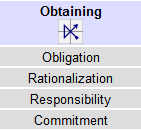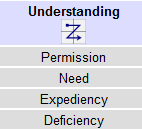I’m reading through Armando’s Screenwriter’s book which is fantastic. From time to time, however, I’ll come across a statement that I don’t understand (or perhaps it is explained elsewhere in the text but I didn’t catch it).
For example, this one here located on the last page before section VI:
“Beside this Two-Scene Sequence, we may also find the rare case where no Variations in the same Sequence are Diagonally paired (such as “Approach, Self-Interest, Attitude and Morality”). In this case, we should give each Variation its own Scene—like we did on the “Using The Plot Sequence Report” chapter of this book.“
So, my question here with this statement is why is in not possible to pair in some manner Approach, Self-Interest, Attitude and Morality?
If I were extremely creative, I might be able to pair something here to create a scene. Using the z pattern to pair, if it were applied to this quad, would be self-interest-morality. Also, a reverse z can be used to dynamically pair. So, in this case, it would be morality-approach.
Or, is there a particular definition used to describe what pairing is and thus that definition puts a parameter on what variations in a quad can be paired?
So, when the author says “no Variations in the same Sequence are Diagonally paired” I’m confused. What am I missing here? Why would a pairing not be able to happen?




